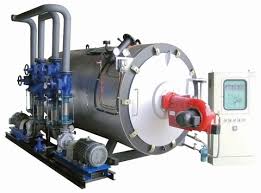
10월 . 13, 2024 22:31 Back to list
how to drain a steam boiler
How to Drain a Steam Boiler A Step-by-Step Guide
Maintaining a steam boiler is crucial for its efficient operation and longevity. One of the essential maintenance tasks is properly draining the boiler to remove any buildup of sediment or impurities. This process is important to prevent corrosion, ensure safe operation, and maintain the overall efficiency of the system. Here’s a step-by-step guide on how to drain a steam boiler safely and effectively.
Step 1 Gather Necessary Equipment
Before starting, ensure you have the necessary tools and safety equipment on hand. This includes - A suitable drainage hose - A bucket or a designated drainage tank - Safety goggles and gloves - A wrench for opening valves - A temperature gauge (if not built into the boiler)
Step 2 Turn Off the Boiler
Safety should always be your top priority. Begin by turning off the steam boiler. This involves 1. Switching off the power supply to the boiler. 2. Allowing the boiler to cool down to a safe temperature. This can take some time, especially if the boiler has been in operation for an extended period.
Step 3 Prepare for Draining
Locate the drain valve, which is typically found at the lowest point of the boiler. To avoid any mess, place the bucket or drainage tank under the drain valve. If the boiler is equipped with a drainage hose, attach it securely to the valve to divert the water safely.
Step 4 Open the Blowdown Valve
Using the wrench, slowly open the blowdown valve. This valve allows sediment and water to escape from the boiler. Be prepared for hot water or steam to escape initially, so ensure you’re wearing safety goggles and gloves to protect yourself from burns.
how to drain a steam boiler

Step 5 Drain the Boiler
With the blowdown valve open, allow the water to flow out completely. This process may take several minutes. If you notice any sludge, rust, or other impurities in the water, it indicates that your boiler has been effectively drained. You may need to close and reopen the valve intermittently to flush out stubborn residues.
Step 6 Close the Valve
Once the water has run clear and there’s no more sediment coming out, close the blowdown valve securely. Ensure that it is tightly shut to prevent any leaks that could lead to pressure loss or other issues.
Step 7 Refill the Boiler
After draining, it’s essential to refill the boiler with fresh water. Open the water inlet valve and allow water to flow until the boiler reaches the appropriate water level, as indicated by the gauge.
Step 8 Restart the Boiler
Once the boiler is filled, turn on the power supply and restart the boiler. Monitor the system closely for any unusual noises or leaks. This ensures that everything is functioning correctly and safely.
Conclusion
Regularly draining your steam boiler is a simple yet vital maintenance task. By following these steps, you can help extend the life of your boiler and ensure its efficient operation. Always prioritize safety and consult the manufacturer’s manual for specific instructions related to your boiler model. With careful attention to maintenance, you can keep your steam system running smoothly for years to come.
-
High-Efficiency Commercial Oil Fired Steam Boiler for Industry
NewsJul.30,2025
-
High-Efficiency Biomass Fired Thermal Oil Boiler Solutions
NewsJul.30,2025
-
High Efficiency Gas Fired Thermal Oil Boiler for Industrial Heating
NewsJul.29,2025
-
High-Efficiency Gas Fired Hot Water Boiler for Sale – Reliable & Affordable
NewsJul.29,2025
-
High Efficiency Biomass Fired Hot Water Boiler for Industrial and Commercial Use
NewsJul.29,2025
-
High-Efficiency Biomass Fired Hot Water Boiler for Industrial Use
NewsJul.28,2025
Related PRODUCTS






















